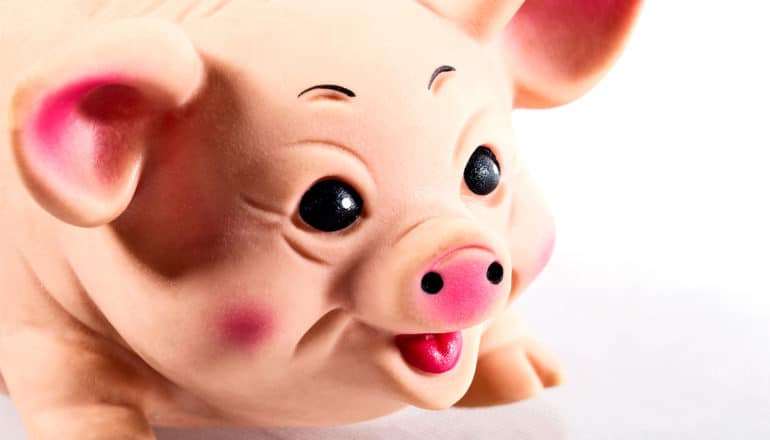
The East German communist state’s approach to industrial pig farming foreshadowed its demise, a historian argues in a new book.
Thomas Fleischman has been obsessed with pigs for the better part of the last decade.
Tracing the history of East Germany’s birth in the immediate aftermath of World War II to its sudden collapse in 1989, the assistant professor of history at the University of Rochester has examined the socialist country’s history exclusively through the lens of pig farming. In his new book, Communist Pigs: An Animal History of East Germany’s Rise and Fall (University of Washington Press, 2020), Fleischman argues that agriculture under communism was in many ways not that much different from capitalist agriculture.
“Pig and pig farming provide a clear case study of convergence,” says Fleischman, who spent years combing national and local archives in the US and former East Germany, as well as interviewing and visiting former industrial pig farmers in the now-defunct German Democratic Republic (GDR), an authoritarian satellite state of the Soviet Union.
The pig, he argues, played a fundamental role in the GDR’s attempts to create a modern industrial food system, albeit one based on communist principles of large-scale collective farming. By the mid-1980s East Germany produced more pork per capita than West Germany and the United Kingdom together.
But the small nation paid a high price for its pig prowess: from manure pollution to animal disease and rolling food shortages—the reliance on industrial pork, much of which was directly destined for export, foreshadowed the country’s ultimate environmental and political collapse in 1989.
To many, the 40-year history of East Germany boils down to a sad tale of environmental, ideological, and economic disaster. Yet, assuming that this type of ecological fiasco died along with the communist experiment would be drawing the wrong lessons from history, argues Fleischman. Instead, he sets out to trace the history of the pollution crises, caused by the global rise of industrial agriculture in the last century, that destroyed the East German regime and persist to this day elsewhere.
“If the word ‘Orwellian’ is shorthand for a kind of totalitarian regime, then the GDR seemed to be its real-world embodiment,” writes Fleischman, replete with the communist pigs from George Orwell’s Animal Farm. And “just like Orwell’s pigs and people, communist and capitalist countries adopted analogous forms of agricultural production, which treated land, labor, and animals as cheap and disposable.”
Such industrial farming, he argues, is not the sole prerogative of totalitarian regimes; its collateral cost to society and nature is equally high elsewhere.
“The crises of air and water pollution, the breakdowns in its farms, and the series of temporary food shortages [in East Germany]—appear not as an aberration, but as a central feature of industrial agriculture everywhere,” writes Fleischman. “They show that cheap food is in fact unimaginably expensive.”
The post How pigs and manure helped bring down East Germany appeared first on Futurity.
from Futurity https://ift.tt/3pKeyVC
No comments:
Post a Comment